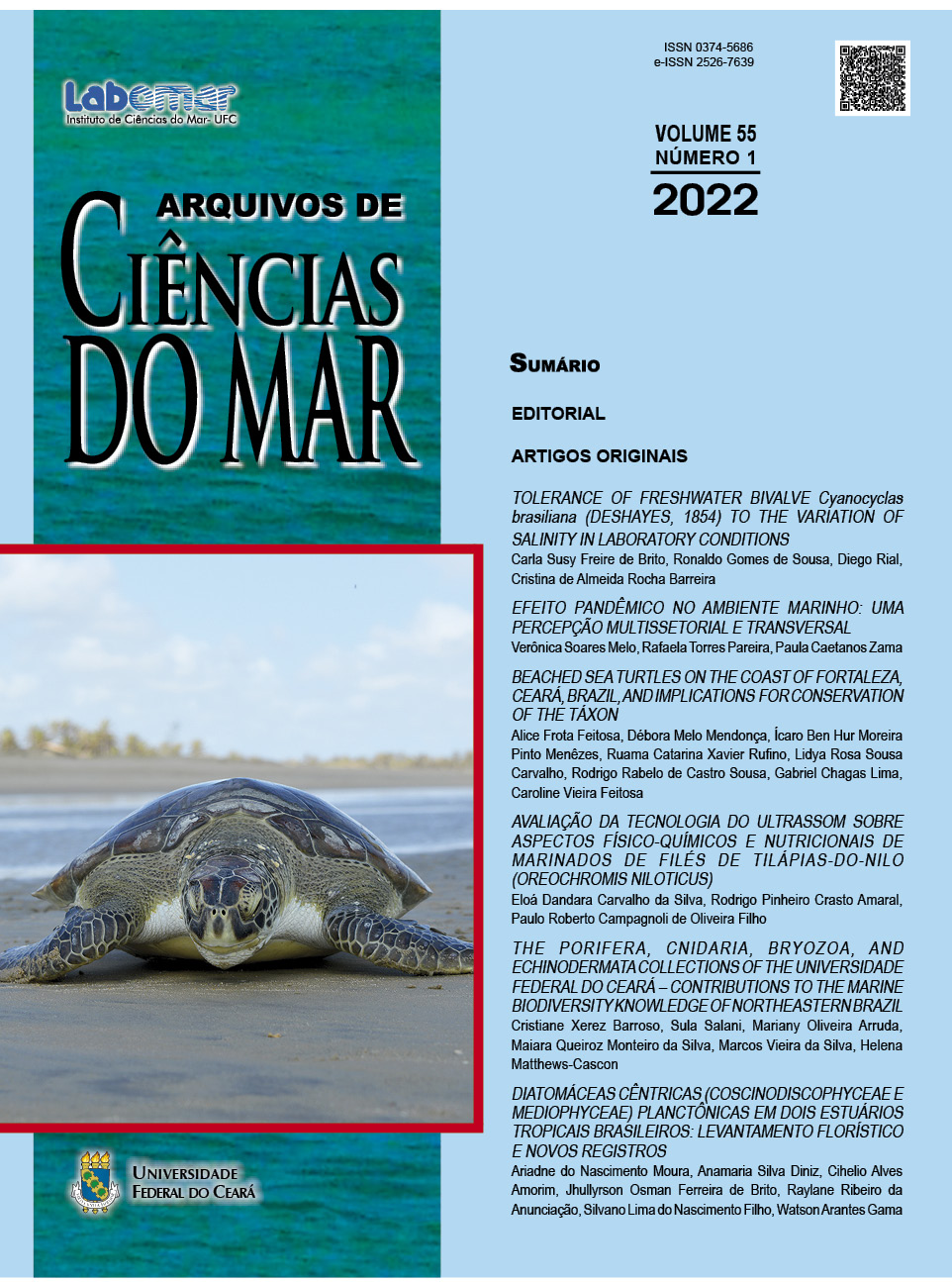BEACHED SEA TURTLES ON THE COAST OF FORTALEZA, CEARÁ, BRAZIL, AND IMPLICATIONS FOR CONSERVATION OF THE TÁXON
Tartarugas marinhas encalhadas na costa de Fortaleza, Ceará, Brasil, e implicações para a conservação do táxon
DOI:
https://doi.org/10.32360/acmar.v55i1.70464Abstract
The Ceará’s state coast belongs to one of the most important areas of the South Atlantic for migration and feeding of sea turtles. Thus, the present study observed (1) which species occur in Fortaleza, (2) which species and sex are beached the most, (3) the life stage and (4) season that they most strand. We aimed to update existing information regarding the occurrence of sea turtles in Fortaleza, evaluate if seasonality influences
beaching behavior, register the beached species on the coast of Fortaleza, and investigate the beaching behavior. This study was carried out in Fortaleza, Brazil. Data were obtained through monitoring and reports provided by the local community, from January/16 to December/19. A total of 112 beached turtles of four species were observed, and younger specimens were more observed. No significant differences appeared between the years, months, and the rainy/dry seasons on the number of the strandings. Females were observed more than males for all species, perhaps due to the use of the region as a migratory route for breeding and foraging. This is the first data for Ceará State published in a scientific paper, which can be used as the basis to raise awareness in the general population, and government, regarding the vulnerability of these organisms.
Keywords: Chelonia mydas, juvenile turtles, female turtles, human activities, northeastern.
Downloads
Published
Issue
Section
License
1. Proposta de Política para Periódicos de Acesso Livre
Autores que publicam nesta revista concordam com os seguintes termos:
- Autores mantém os direitos autorais e concedem à revista o direito de primeira publicação, com o trabalho simultaneamente licenciado sob a Licença Creative Commons Attribution que permite o compartilhamento do trabalho com reconhecimento da autoria e publicação inicial nesta revista.
- Autores têm autorização para assumir contratos adicionais separadamente, para distribuição não-exclusiva da versão do trabalho publicada nesta revista (ex.: publicar em repositório institucional ou como capítulo de livro), com reconhecimento de autoria e publicação inicial nesta revista.
- Autores têm permissão e são estimulados a publicar e distribuir seu trabalho online (ex.: em repositórios institucionais ou na sua página pessoal) a qualquer ponto antes ou durante o processo editorial, já que isso pode gerar alterações produtivas, bem como aumentar o impacto e a citação do trabalho publicado (Veja O Efeito do Acesso Livre).

